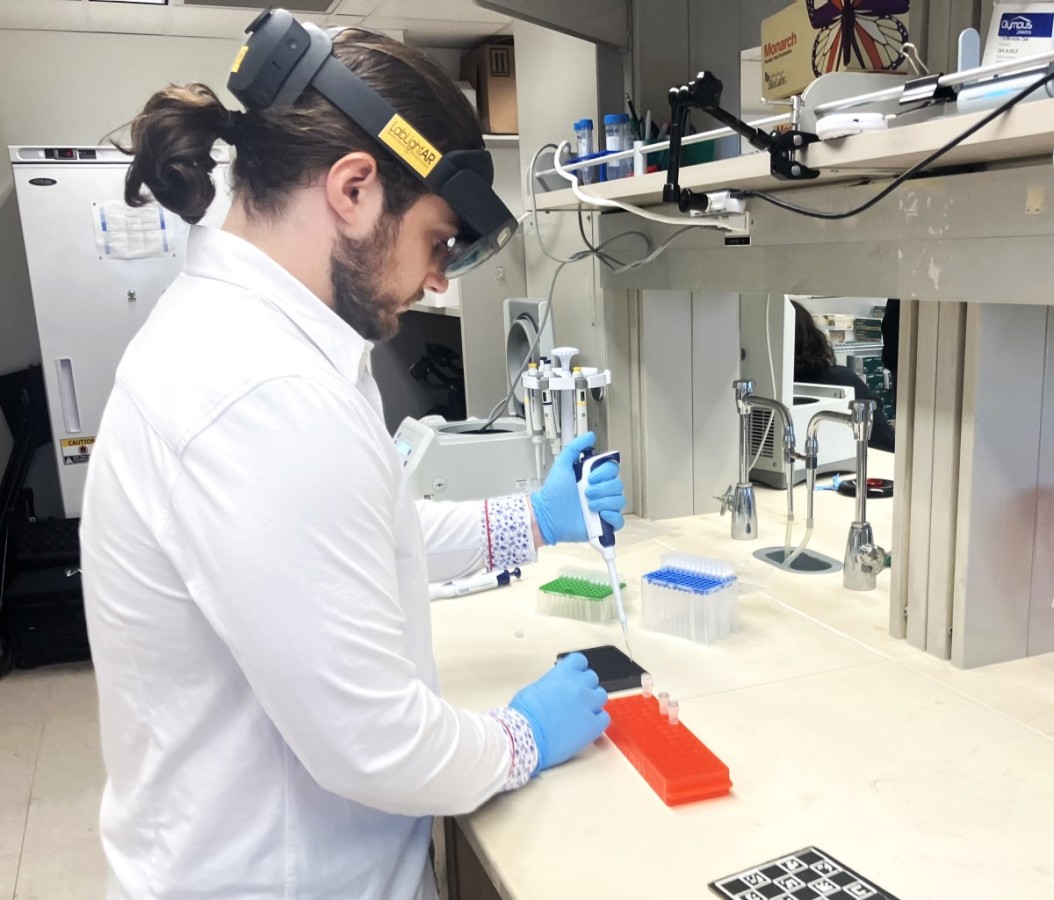 BBI Research Scientist Nahum Smith "test drives" augmented reality.
BBI Research Scientist Nahum Smith "test drives" augmented reality.
Earlier this year, the journal Nature published an article entitled, “Why scientists are delving into the virtual world.”
The writer, Rachel Pells, a science and technology journalist in London, writes, “Alongside VR’s (virtual reality’s) potential for training and education, many scientists who use the technology hope that it will one day make their practical work more efficient.”
Staff in BBI’s Advanced Technology Lab (BAT-Lab) spent the afternoon of November 9 exploring ways to incorporate augmented reality (AR) into their daily responsibilities, such as using pipettes. The opportunity was provided by LabLight AR, a Seattle-based firm whose principles, Roger Brent and David M. Moore, want to make AR headsets as ubiquitous in labs as microscopes. “With our technology, we will turn novices into journeymen and experienced persons into bench superstars,” Brent said. “AR guidance will make everything in the lab go faster with fewer mistakes and increase the rate of scientific discovery.”
His firm’s technology is the result 10 years of research and engineering work to use AR in life science operations, Brent said.
For BBI’s Nahum Smith, a BBI research scientist, the technology seemed commonplace.
"If you’re familiar with driving or playing video games, using the headset feels more like a natural evolution of job-aid/pipetting assistance than something that fundamentally changes benchwork,” he said. “It’s important to see this as an augment to an existing role, not a replacement in the way as high throughput robotics.”
The LabLight website states the firm applies machine learning to high precision/high skill manual operations in the life sciences, such as quality assurance and quality control, as well as process development.
“Our approach builds muscle memory, actively prevents errors, and reduces training time, allowing complex tasks to be executed without errors by less practiced and less specialized workers. Our patented spatial localization, object recognition, tracking, and other technology supports patented positive and aversive interactive guidance. Our technology understands objects and operations in biopharma procedures and guides workers to successful completion.”
Dr. Lea Starita, co-director of the BAT-Lab who gave permission to Brent and his colleagues to film for half a day, believes AR could play an important role in future disease outbreaks.
I am happy to lend our people and our protocols,” she said. “This technology could be really important should we have another national emergency or a pandemic. And American science needs to jump in.”


